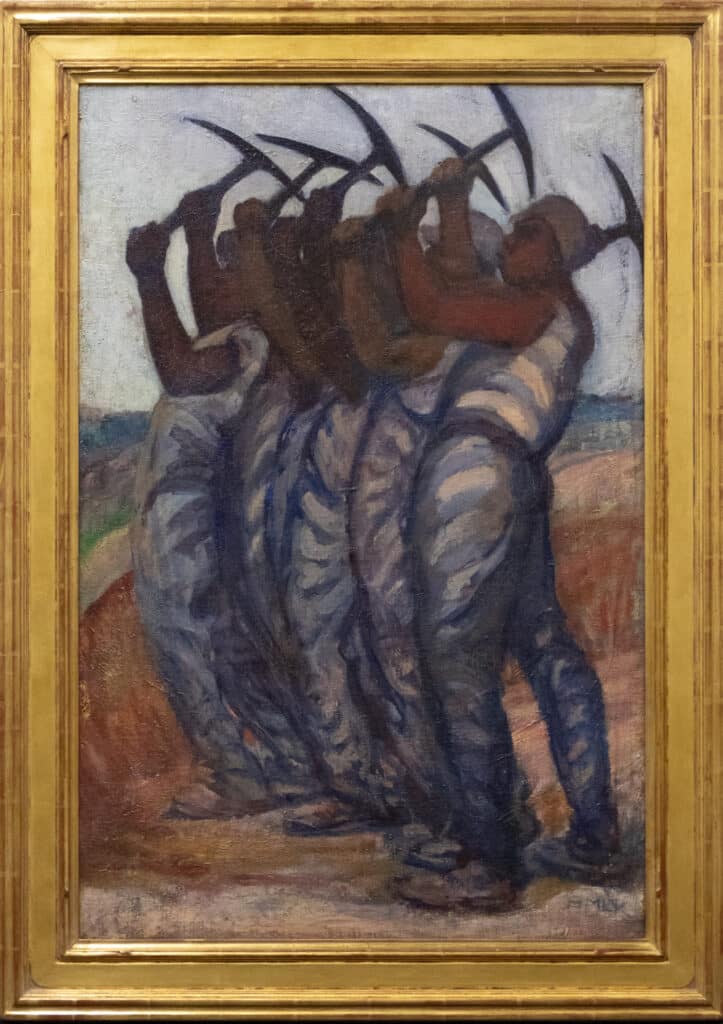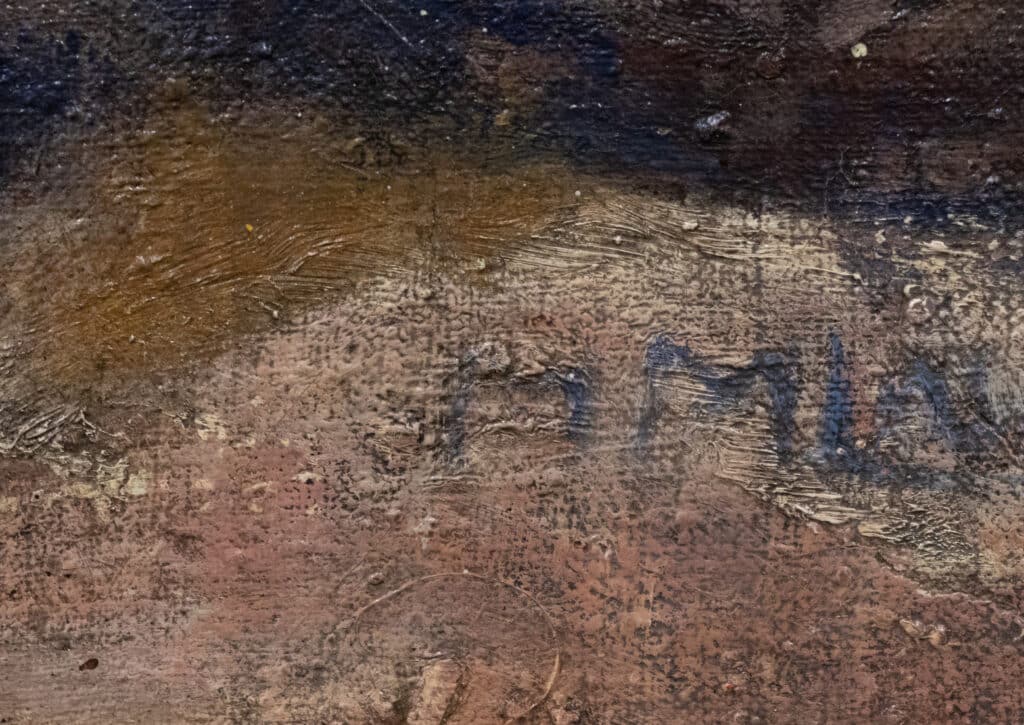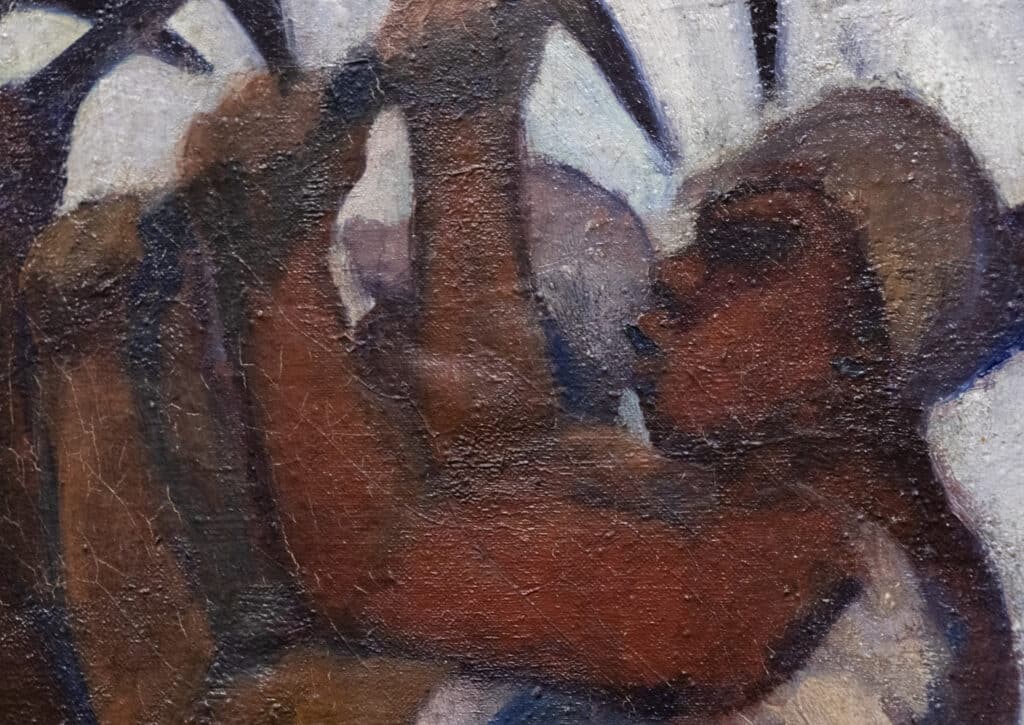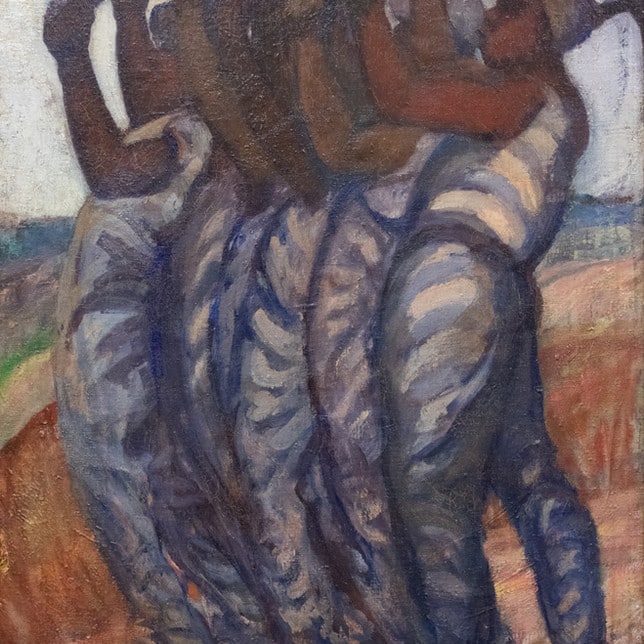about the work
Chain Gang is typical of Law’s mature work of the 1930s and 40s. In her own words, “I put down what I see, wherever I am, and the result is a record of life in a small southern town.” Interest in real-life characters and situations was common among students of Robert Henri. But although obviously deeply influenced by Henri and devoted to the themes of American Scene painting, Law incorporated modernist influences into her work through her repetition of forms, simplified composition, and vibrant color.
Many of her works depict the lives and routines of rural laborers, often African Americans. The number and variety of works that deal with this theme in her oeuvre reveal a deep attachment and interest. Since Law accurately depicted the visual landscape of a small, early 20th-century southern town, her works sometimes depict politically charged or historically challenging subject matter. Such works, as in the case of Chain Gang, often depict scenes that no longer exist in Southern culture, and as such reflect the changing historical narratives of America. But they stand as a testament to the complex social journey that Americans have taken from our nation’s inception to the present day.
The curatorial staff of the Spartanburg Art Museum feels it is a vital responsibility of Museums to preserve such challenging and sometimes difficult historical documents.
about the artist
Margaret Law graduated from Converse College in 1895 as that institution’s first fine art major. She went on to attend the Pennsylvania Academy of Fine Arts, Art Students League, Cooper School, and New York School of Art. Law studied under both William Merritt Chase and Robert Henri but cited the latter as the greatest influence on her work. After college, she taught at Bryn Mawr Art School in Baltimore for nearly twenty years, before returning to Spartanburg in 1936, where she co-founded the spiritual ancestor of the Spartanburg Art Museum, the Spartanburg Arts and Crafts Club, with Josephine Sibley Couper.





